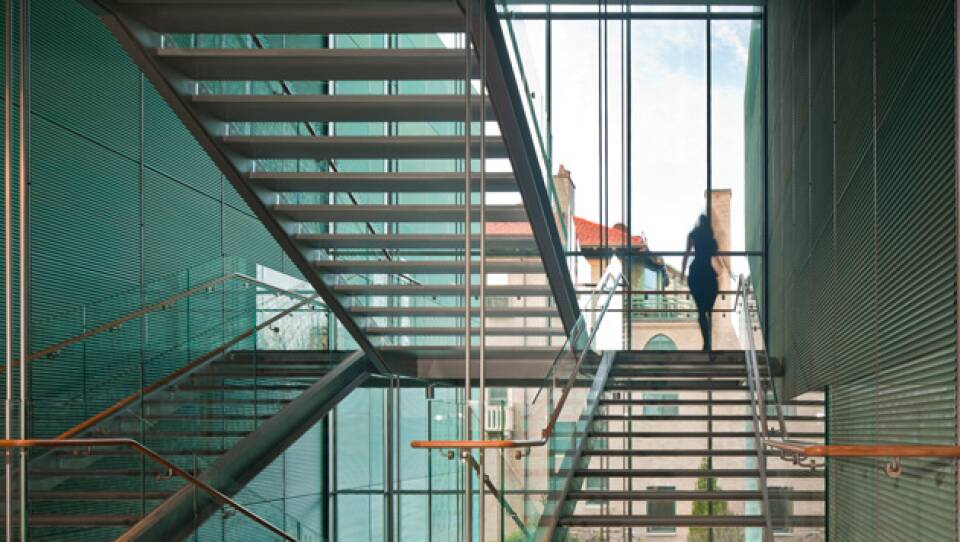The Boston area’s museum renaissance has reached even greater heights with the opening of the Isabella Stewart Gardner Museum’s new wing. Designed by celebrated architect Renzo Piano, the gleaming, modern glass structure manages to get closer to Gardner’s own vision.
A triumph of will and passion, The Gardner museum is an Italian oasis in the Fenway brimming with some of the most enviable pieces of art in the world. It’s affectionately called “the Palace,” which for architect Renzo Piano, made designing its new wing, downright daunting, according to director Anne Hawley.
“The first day he came to work with us, which was in December of 2004, looking at the building and he said after spending some time in the courtyard, ‘This woman was mad, this is extraordinary. I have to quit the job, no one can do this.’ By which he meant what Gardner did was so tangibly evocative and pulled out of you such emotions that you really can’t touch it,” Hawley said.
And he hasn’t, really. The Gardner’s new wing is set 50-feet back from “the Palace.” It is larger in square footage, but smaller in height. In more affectionate terms, it is the great great-grand nephew to the original museum, the grand dame aunt.
As Piano describes it, “The new building always refers to the Palace. Doesn’t matter what you do in the new building. When you enter, you see the Palace there. When you sit in the living room you see the Palace. When you walk up and down or you have a meal or you walk in the stair, you always see the Palace. The Palace is the constant reference. I can say it’s the object of desire. Of ultimate desire,” he said.
A 180 million dollar project, this copper-clad offspring is now the repository of the real world. It’s here where you enter, its glass façade ensuring a smooth and transparent transition off the Fenway. It’s where you do your real-world business of buying tickets, shopping in the gift shop and dining in the new café. But it calms you. It’s designed to be cozy, like a book-lined living room, right down to the Italian canaries in the new orientation space.
“Gardner in her time shared her collections and hospitality to visitors and her friends and today’s trustees and staff were the extensions of that. And so that idea of sharing and welcoming was what we wanted to carry into that space,” said Hawley
Then you leave it and shed the real world by passing through a glass corridor into the Palace. Piano calls it the umbilical cord. It’s lined with trees and he wants visitors to feel as though they’re passing through a forest and through time.
‘The link is a kind of a place from change. You change speed. You enter a piece of history, and the museum made that miracle. You enter in the different world. It is out of time. It is timeless,” he said.
This new entrance to the Palace restores the central axis Gardner herself designed so that visitors are gently guided directly to the museum’s wow moment—its soaring and newly restored courtyard.
“You can’t be occupied with mundane thoughts anymore. You have to surrender to the beauty of it,” said Hawley.
Also restored in the Palace is The Tapestry Room which for the first time in nearly a hundred years is at it was. It no longer doubles as an unfortunately cluttered music hall, because back in the new wing, Piano has created a very singular one, a perfect cube.
“Its small and the stage is the floor, the ground floor is the stage, then it’s surrounded by two rows of audience on all four sides. Then there are three balconies going up, each with 60 seats, only front-seats. So everyone has a front-row seat. And the sound is incredible,” said Hawley.
In many ways, Hawley also sees the new wing as a workshop. It’s where music is made, where the museum’s artists-in-residence live and work and where the greenhouses that serve the courtyard are housed. It’s a reflection of Gardner’s own mission for the Palace.
“It was always meant to be used by artists, scholars, performers, to build on to make their work and to present it to the public, which Gardner did all the time. She was a real patron of the artistic and the creative process,” she said.
Which is manifested in the new special exhibition gallery. Four times the size of the old, cramped one, it now features an installation by Glasgow artist Victoria Morton, a former artist-in-residence.
“Gardner so championed that,” Hawley said. “One of her favorite phrases was ‘fire the imagination.’ I think the public is going to hopefully get into this relationship with the work of young artists who are responding to our time and influenced by the collection in doing so.”
A triumph of concept and execution, the new wing flatters and compliments “the Palace” in a most brilliant fashion.





